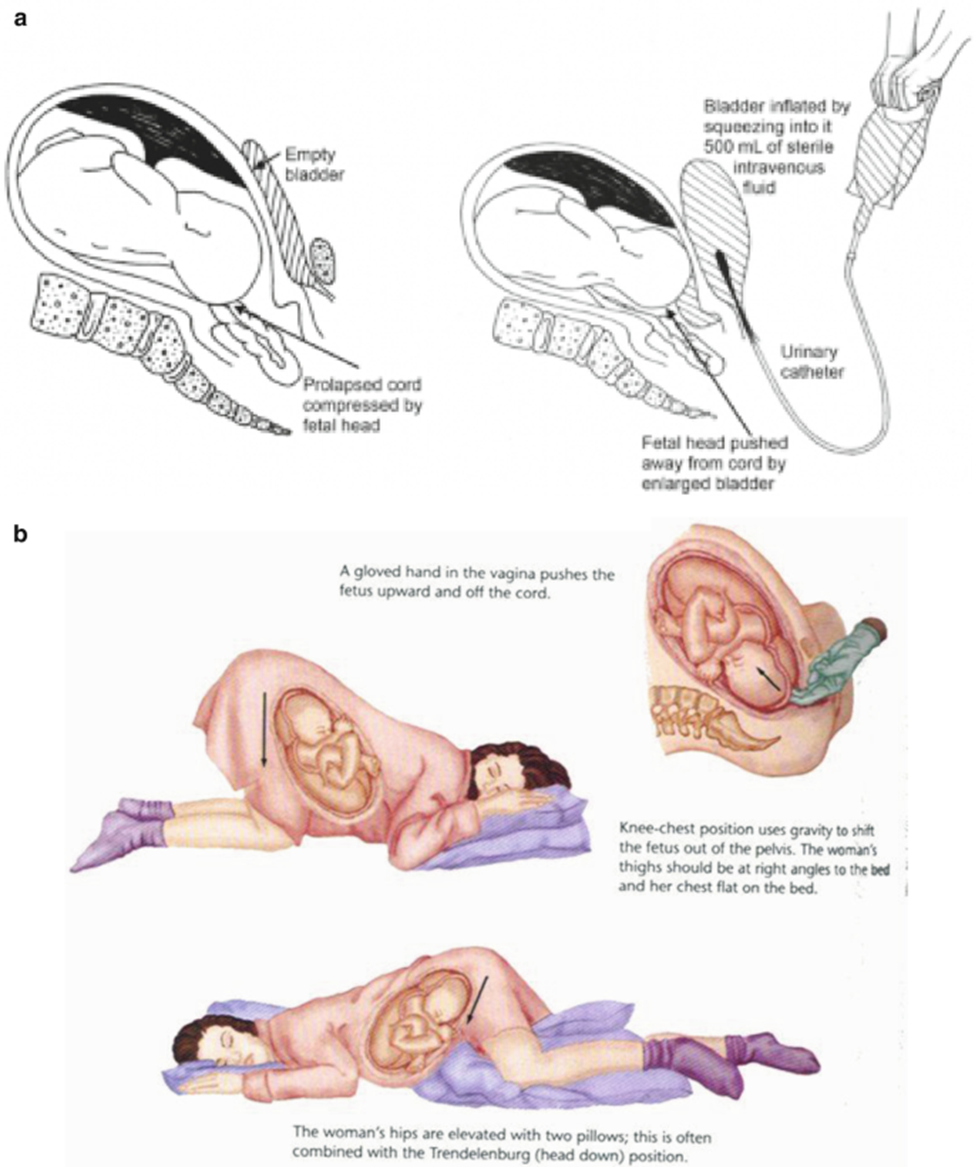A nurse is caring for a client who is in the first stage of labor. The nurse observes the umbilical cord protruding from the vagina. Which of the following actions should the nurse perform first?
Cover the cord with a sterile, moist saline dressing
Place the client in knee-chest position
Insert a gloved hand into the vagina to relieve pressure on the cord
Prepare the client for an immediate birth
The Correct Answer is C
The correct answer is C. Insert a gloved hand into the vagina to relieve pressure on the cord.
A. Covering the cord with a sterile, moist saline dressing is a potential action, but relieving pressure on the cord takes precedence. This can be done by manually elevating the presenting part of the fetus off the cord.
B. Placing the client in a knee-chest position may be recommended after taking the immediate action of relieving pressure on the cord. Elevating the hips may help reduce cord compression.
C. Inserting a gloved hand into the vagina to relieve pressure on the cord is the priority action.
By manually lifting the presenting part off the cord, the nurse can help restore blood flow to the fetus and prevent umbilical cord compression.
D. Preparing the client for an immediate birth may be necessary, but the immediate action to relieve pressure on the cord should be performed first. The healthcare provider will determine the need for urgent delivery based on the clinical situation.

Nursing Test Bank
Naxlex Comprehensive Predictor Exams
Related Questions
Correct Answer is B
Explanation
A. "This medication will stop your labor": Betamethasone is not intended to stop labor. It is given to promote fetal lung maturity and reduce the risk of complications associated with preterm birth.
B. "This medication stimulates fetal lung maturity": This is the correct statement. Betamethasone is administered to enhance the production of surfactant in the fetal lungs, improving respiratory outcomes for the preterm infant.
C. "This medication will decrease your risk for uterine infections": Betamethasone does not directly decrease the risk of uterine infections. Its primary benefit is in promoting fetal lung maturity.
D. "This medication will increase your baby's weight": Betamethasone is not given to increase the baby's weight. Its main focus is on improving lung function and reducing respiratory complications in preterm infants.
Correct Answer is B
Explanation
The correct answer is B.
A. Place warm, moist packs on the breasts: Warm, moist packs can increase blood flow and may actually stimulate milk production. This is not an appropriate intervention for lactation suppression.
B. Apply cabbage leaves to the breasts: This is the correct intervention. Cabbage leaves have been traditionally used to help reduce engorgement and suppress lactation. The mechanism is not fully understood, but it is believed that compounds in cabbage may help decrease milk supply.
C. Wear a loose-fitting bra: Wearing a loose-fitting bra can help reduce friction and discomfort, but it is not a specific intervention for lactation suppression.
D. Put green teabags on the breast: Green teabags are not commonly recommended for lactation suppression. Cabbage leaves are more widely accepted for this purpose.
Whether you are a student looking to ace your exams or a practicing nurse seeking to enhance your expertise , our nursing education contents will empower you with the confidence and competence to make a difference in the lives of patients and become a respected leader in the healthcare field.
Visit Naxlex, invest in your future and unlock endless possibilities with our unparalleled nursing education contents today
Report Wrong Answer on the Current Question
Do you disagree with the answer? If yes, what is your expected answer? Explain.
Kindly be descriptive with the issue you are facing.
